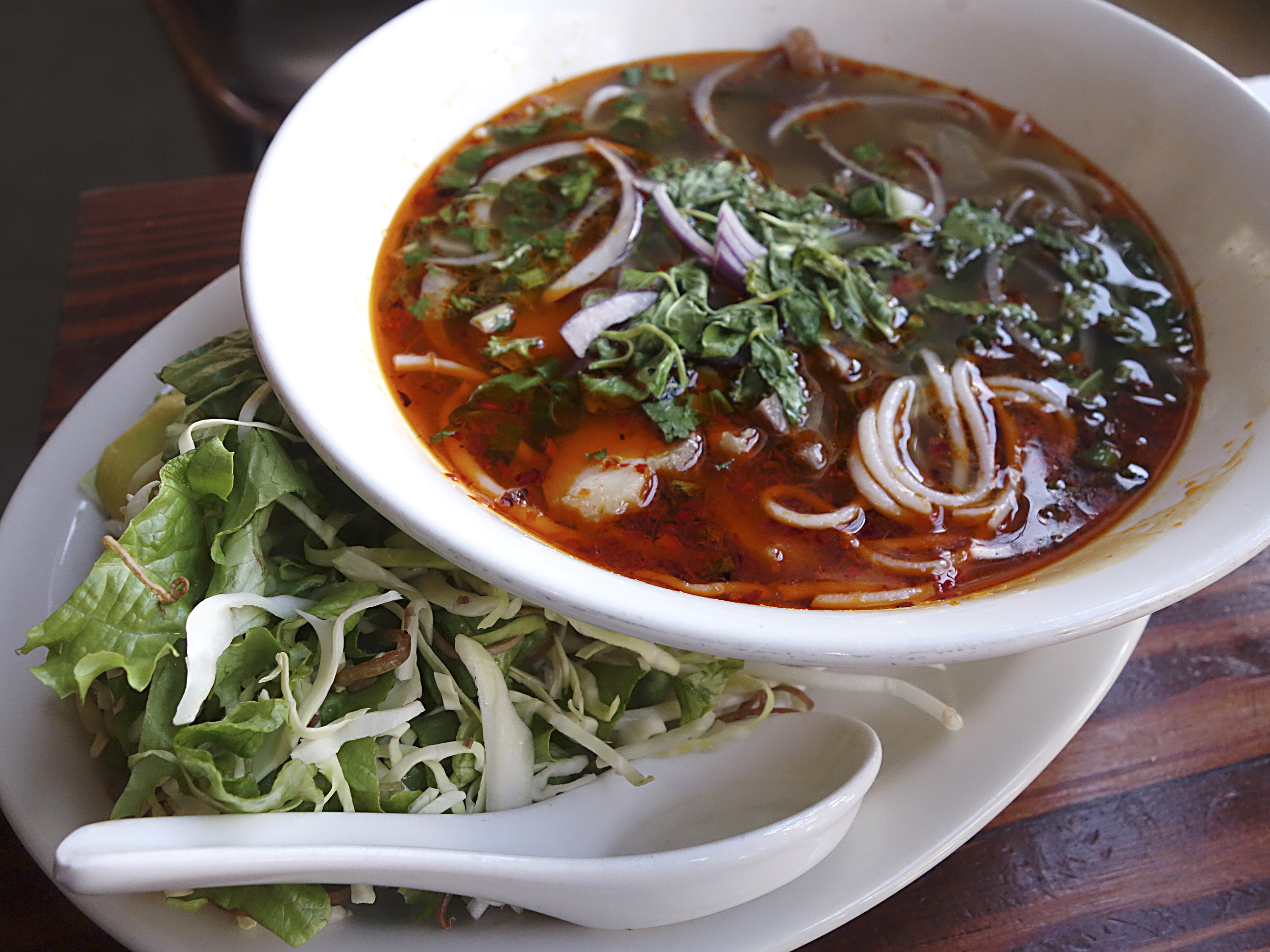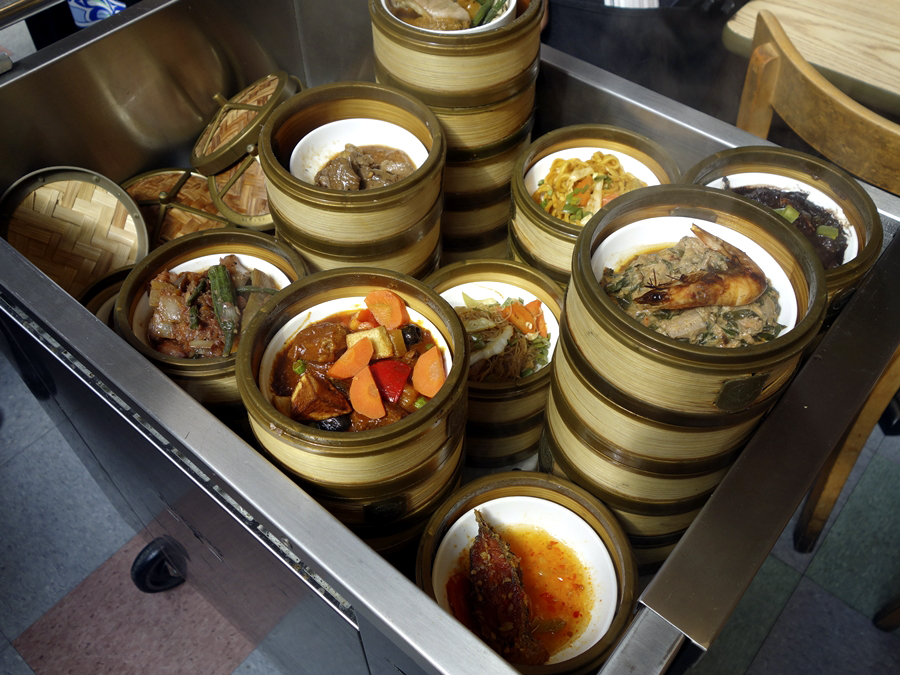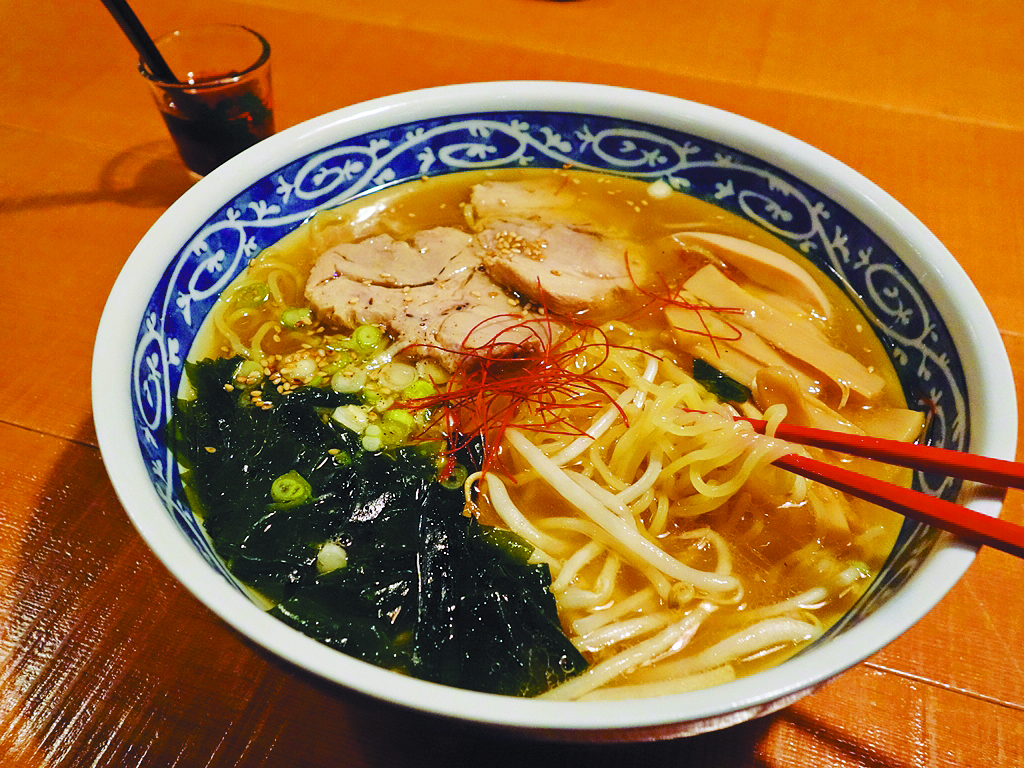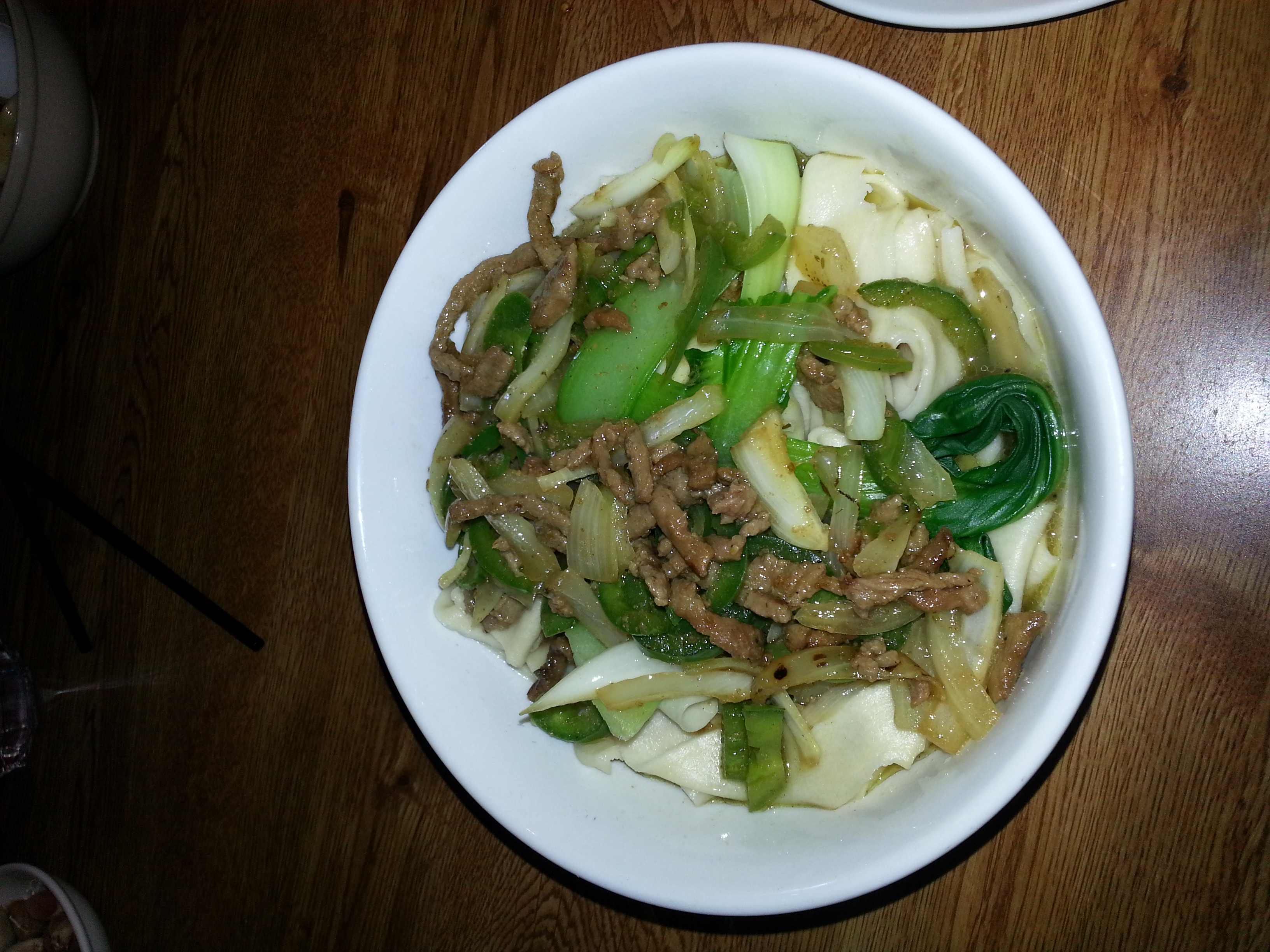One of the more fascinating threads in the Chowhound online food-discussion forum is entitled “Asian desserts . . . why don’t I like them?” As a non-Asian who’s slowly come to appreciate many, but not yet all, Asian sweets, I’ve often wondered what makes them less appealing to Westerners.
What better way to figure it out than to sample a good swath of sweets from Seattle’s International District? It’s there that the Wing Luke Museum offers its Chinatown Discovery Tours, including the popular Bitter and Sweet Tour that draws on the success of the bestselling book Hotel on the Corner of Bitter and Sweet. Not needing Bitter, I was interested in the Asian Sweet Tour that kicked off this summer to coincide with the museum’s kid-friendly SWEET exhibit, which explores the role of sweets in the traditions and celebrations of Asian cultures.
So off I went with a handful of locals who said they’d often walked by many of the tour stops, wondering about the food but never venturing inside. When I asked the guide what he thought the obstacle was, he guessed a lack of familiarity with Asian sweets. Taking this a step further, I think it’s specifically the difference in form, flavor (sometimes smell), and maybe even function of Asian sweets compared to Western ones. After all, chendol with green “worm” noodles, grass jelly, balls of tapioca, and durian anything can be quite intimidating (and very foreign) to those who’ve yet to experience them.
Thinking back to childhood birthday celebrations of chocolate cake topped with a big scoop of ice cream, I’m reminded that Western desserts tend to be very rich and sweet, with more use of dairy products than you’ll find in most Asian desserts. Granted, some Asian desserts certainly are sweet as well (Indian ones in particular), but most are light and less sweet, which explains why many of my Japanese friends roll their eyes at the cupcake craze. They’re simply startled by the amount of sugary frosting, which they scrape off before eating a “bald” cake.
That’s why Fuji Bakery (526 S. King St.) is a sensible stop on the Asian Sweet Tour, as the products demonstrate that Asian pastries are less sweet than their Western counterparts, yet still delicious. Japanese bakeries like Fuji combine Asian ingredients with Western (especially French) ingredients and techniques. The forms are familiar (think croissants, danishes, and brioches) and the aesthetics are gorgeous, but the flavors may be new to some. Matcha (green-tea powder) is a good example.
At Fuji, our group sampled the green-tea danish. Made with croissant dough, its swirl of green comes from matcha powder, which lends an earthy, delicious flavor. (I was glad to see this, as green tea hasn’t always been a success in the Seattle area. In 2006, a partner in Tully’s Japan opened Koots Green Tea with much fanfare in Bellevue, followed by a location in Seattle. I loved Koots’ green-tea latte with kuromitsu, a sort of Japanese molasses with a slight bitterness [well, it seems I do like some bitter with sweet after all]that pairs well with matcha. Unfortunately, the stores closed in 2008, as not enough Westerners embraced the concept—though many did like Starbucks’ green-tea latte, perhaps because it was sweeter, with sugar premixed into the matcha powder and melon syrup added.)
Matcha. Kuromitsu. The words are foreign, as are the desserts. So just like learning a new language, it’s all about immersion. A good place to start, I think, is with one of my favorite Asian desserts: tofu-fa. This steamed tofu pudding sometimes comes with ginger syrup (ginger helps with digestion, which gets at the function of some Asian desserts), but at Sub Sand (419 Sixth Ave. S.) you can get it with adzuki (red) beans and syrup. Tofu-fa is comforting and refreshing, though some may initially scoff at the idea of tofu for dessert.
The use of tofu in tofu-fa illustrates another difference: Asian sweets tend to be made with legumes, vegetables, and herbs, with the latter often serving a medicinal purpose. Take taro, for example: This starchy tuber is found in a number of Asian sweets, like the green-tea, honeydew, and taro mousse cake our tour group sampled at A Piece of Cake (514 S. King St.).
Colorful, light, and not too sweet, this cake is easy to eat for most Westerners, and therefore a good gateway into the realm of Asian desserts. Let’s call it a “beginner” sweet—much like the popular cocktail bun at Mon Hei Bakery (669 S. King St., proclaimed the oldest Chinese bakery in Seattle), which is light and fluffy and filled with flavors of cream and coconut. A Piece of Cake offers a “wife cake,” an “intermediate” sweet typically made with winter melon, almond paste, and a touch of five-spice powder. It may sound like a strange combination, but I enjoy the complex, herbal flavor these ingredients lend. At Chinese bakeries like these two, I’m always on the lookout for a more “advanced” sweet (or should I say savory?) like the one I found to the north in Richmond, B.C.: a preserved duck egg in lotus-paste pastry, with a slightly sulfuric odor and a gooey interior. My craving continues as I search in despair for this in the Seattle area.
This pastry exemplifies two other elements of Asian sweets that make them hard for some to swallow: smell and texture. At Phnom Penh (660 S. King St.), you can challenge yourself, as our group did, to try a durian shake. Start with its odor, which I describe as stinky cheese that’s been rotting inside an old sneaker stored in a sweaty locker-room; if you can get past that, you’ll note how uniquely sweet the fruit actually tastes. (If this is too daunting, Phnom Penh’s subtler jackfruit smoothie might better suit you.)
And then there are all those chewy desserts, like Filipino pichi-pichi and Vietnamese rau cau (Jell-O cake). The best way to break into this gelatinous genre? Bubble tea. The Asian Sweet Tour stops at Oasis Tea Zone (519 Sixth Ave. S.), where we sampled lavender-colored taro slush bubble tea. At the bottom are the “bubbles,” which you suck up with a fat straw. These tapioca balls are made in a fairly intricate process, and are all about texture. They’re a bit addictive, though once you know the calorie count, you might be tempted to instead use them as spitballs.
Walking into Oasis or a similar bubble-tea shop can be like walking into any unfamiliar Asian shop or restaurant: overwhelming. They can feel like a foreign country, full of teenagers hanging out and speaking different languages, perhaps with K-pop blaring in the background. Even the menu board can be bewildering, with all the “exotic” flavors and options: hot, cold, slush, juice, smoothie, add-ons, mix-ins, whirled, shaken, etc.
But the challenge is to embrace the difference. Ask for help. Despite occasional language barriers, I.D. store and restaurant owners are usually proud to show off their products and tell you more about them. And those kids in the bubble-tea shops are all right. Ask them what they’re drinking if you don’t want to face the front counter cold. If you do, you may even find out what grass jelly really is. E
food@seattleweekly.com
Asian Sweet Tour Wing Luke Museum, 719 S. King St., 623-5124, wingluke.org. $25–$35 (includes samples and museum admission). 3 p.m. Sat., Oct. 19. SWEET, in the KidPLACE Gallery, ends Jan. 5.
[Sidebar]
My picks for Asian sweets outside the I.D.:
Joule (3506 Stone Way N., 632-5685, joulerestaurant.com): Here you’ll find seasonal desserts that integrate Asian ingredients, as well as the popular “Joule box” with tapioca pearls, ruby grapefruit brulee, and coconut—a refreshing way to end a meal at this Korean-inspired restaurant.
Miyabi 45th (2208 N. 45th St., 632-4545, miyabi45th.com): Soba maker Mutsuko Soma finds fascinating ways to bring buckwheat and other Asian ingredients into her desserts. Perfect example: the green-tea ice-cream sandwich, with buckwheat cookies, kuromitsu, and kinako powder that was offered at press time.
Yunnie Bubble Tea (4511 University Way N.E., 547-9648): There are all kinds of bubble tea at this U District hangout, but my favorite is fresh avocado, poured into a cup lined with chocolate syrup. An intriguing and delicious flavor combination!
Hiroki (2224 N. 56th St., 547-4128, hiroki.us): This longtime Japanese bakery in Tangletown gets worthy praise for its green-tea tiramisu, which is served at a number of area restaurants, but also look for Hiroki’s versions of the French mont blanc (pureed sweetened chestnuts in cake or tart form), as well as the Hawaiian haupia, with coconut, mango, and more atop chiffon cake.







